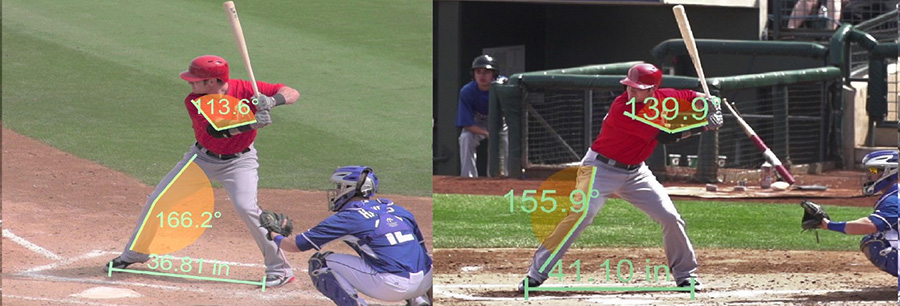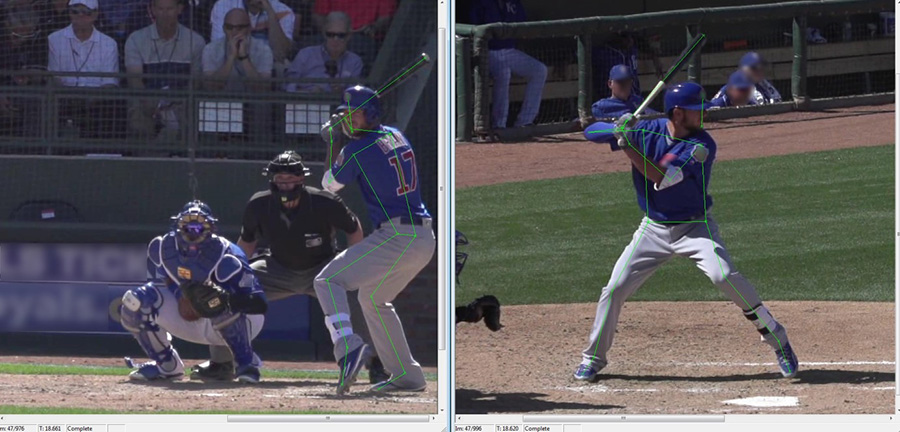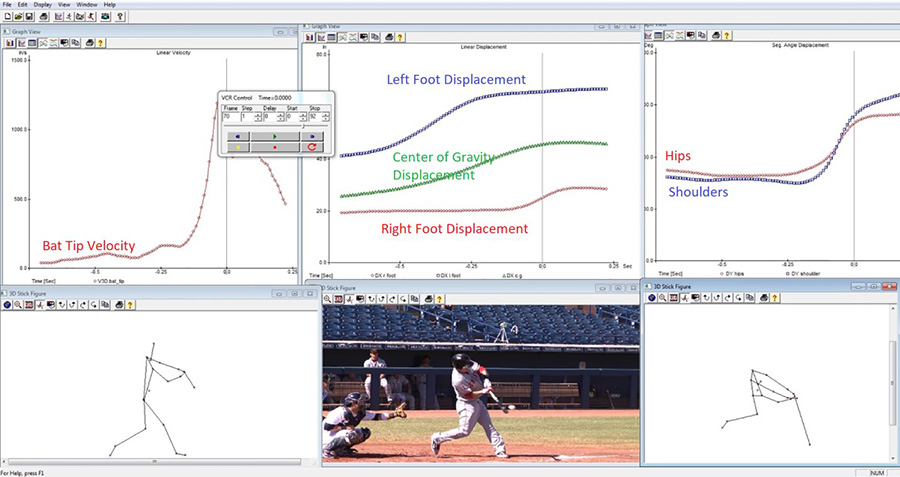You can't turn on an MLB highlight show without hearing what is often referred to as today's advanced metrics, launch angle, exit velocity, flight distance, etc. Twenty years ago at the 1997 ABCA convention in Dallas, one of our research committee members presented the results to a hitting study performed by Bio Kinetics Research & Development. This study was NOT performed using two-dimensional observation video as had almost all existing studies, but rather using three-dimensional biomechanical analyses captured during live Major League competition. When I consider all the metrics being used to describe today's game, all I could think about was that 1997 presentation and wonder, “why did this take so long?”
That ABCA presentation not only described the MLB average exit velocity and what Bio Kinetics called “exit angle,” but also the underlying biomechanical factors that produced those metrics. While everyone is now focused on metrics, it appears that very few really understand or can even describe how the best hitters generate those metrics.
I reached out to Bob Keyes at Bio Kinetics to see if he would be interested in a Q & A on his recently released book, titled “Hitting Biomechanics,” which is based on a 30-year study of the best hitters in baseball, using three dimensional biomechanical analysis of live MLB competition.
Gary Pullins: What can you tell us about Bio Kinetics?
Bob Keyes: Bio Kinetics Research & Development was founded in 1986 with the goal of improving athletic performance through the latest computer and video technology. For the past thirty years, Bio Kinetics has been compiling motion analysis research on the best hitters and pitchers in the game of baseball through three dimensional motion analyses, captured during live competition.
GP: What is the difference between two dimensional and three dimensional?
BK: Hitting a baseball is a three dimensional activity and therefore requires a three dimensional measuring device in order for accurate data to be captured.
For example, imagine if you took two separate side views of the same swing at the instant of foot strike in two dimensions. Even though the measurements were taken from the same hitter at the same time, they are not only different from each other but the fact is that neither measurement is accurate. These measurements were made from the perspective of the camera’s eye, which distorts the image due to angle and distance.
 GP: What are hitting metrics?
BK:
GP: What are hitting metrics?
BK: Bio Kinetics Research & Development created the term “KineMetrics” – real-time, metric-based 3D video© - to describe the results of the unique process we use to analyze athletic performance. In comparison, you may have heard of Sabermetrics, the application of statistical analysis to baseball records in order to evaluate and compare the performance of individual players. Sabermetrics has pretty much taken over the game of baseball. Similarly, since 1986, Bio Kinetics Research & Development has been collecting KineMetric data during live Major League competition. This database of elite player performance has enabled us to apply human movement statistical analysis in order to evaluate, develop, and maintain baseball performance.
GP: How is this information captured?
BK: Players are captured with multiple cameras at several hundred frames per second in high resolution to evaluate their actual performance. It is important to understand that standard video (30 to 60 frames per second) will not give a coach or evaluator the information needed to make an informed decision because the essential movements cannot be seen at these speeds.
 GP: What happens after the video is captured?
BK:
GP: What happens after the video is captured?
BK: Bio Kinetics co-founder, Alan Blitzblau collaborated in the 1970’s with Dr. Gideon Arial to develop the first three-dimensional sports motion analysis system. This system employed manual digitizing from multiple simultaneous film images (and eventually video images) to accurately measure and model the body mechanics of athletes in actual competition in a wide range of sports. Manual digitizing from multiple calibrated cameras has been the accepted process for measuring human movement world-wide by the International Society of Biomechanics in Sports for almost five decades. Manual digitizing has been used in the Olympic Games since 1972 and thousands of articles and research studies have been published using this technique.
 GP: So how are KineMetrics obtained from the digitizing?
BK:
GP: So how are KineMetrics obtained from the digitizing?
BK: The results of a player’s personal analysis are then presented using computer-generated images to show body position and body movement at critical phases in the delivery or swing. Graphs of specific motion parameters are generated for each phase. The analysis uses numerical measurements made from these graphs.
Applications for 3D Motion Analysis
Scouting / Amateur analysis for player evaluation:
Players are captured at high speed/high resolution to evaluate their actual performance. Because of this, every movement can be measured to the highest degree of scientific accuracy. Individual player hitting mechanics can be compared to our Major League database of the best players in the game of baseball. You no longer wonder if the high school or college player is simply out-muscling the competition, or if instead, he has the true efficiency in his swing to play at the next level.

Mike Trout’s Bat Velocity and Linear/Rotary Engine Timing Graphs
Player Development Analysis:
ARE YOUR PLAYERS GETTING BETTER, STAYING THE SAME, OR REGRESSING?
“If you can’t measure it, you can’t teach it.” Once a player is captured from our multiple high speed cameras, the video is then digitized and turned into three-dimensional computer images from which every aspect of their performance is available to evaluate. This process takes guess work out of the equation and arms the coaching staff with valuable, factual information, giving them a REAL chance to improve the player. All coaches and scouts want to be better at what they do, and most importantly they want to see their players get better. Three dimensional motion analyses from Bio Kinetics equips the coaching staff with precise information, based on the laws of physics and thirty years of research into what the best players in baseball do “biomechanically.”
Performance / Maintenance:
Keeping even the best Major League players performing at a high level is a difficult task. Capturing top players when they are performing well, and then storing the data away for the inevitable slow down, is a valuable tool you obtain by using this technology! Once the work is complete on both the “before” and “after” analyses, the two studies are compared to find out exactly what the differences are when the player was performing well, versus when the player is struggling. Experienced hitting coaches can recognize many things the untrained eye cannot see, however, identifying the most important details of the baseball swing is simply beyond human visual capacity because they involve fraction of a second timing sequences and forces generated within the body that cannot be seen.
GP: What can you tell us about the content?
BK: Since the beginning of organized baseball, there has been a library of material written on the extremely difficult skill of hitting a baseball. Hall of Fame players and former Major League hitting coaches have produced the bulk of this literature, bringing a substantial amount of information from the baseball ‘trenches’ to their profession. However, very little biomechanical information is available on this subject. The content of this book is focused on answering hitting’s ‘un-answered questions.’
ABCA Hall of Famer Gary Pullins ranked 16th among active NCAA Div. I baseball coaches with 913 wins upon retirement and helped his BYU Cougars to seven WAC titles, 15 division crowns, nine NCAA Tournaments and the only No. 1 ranking in program history.
Hitting Biomechanics can be purchased on Amazon.com.